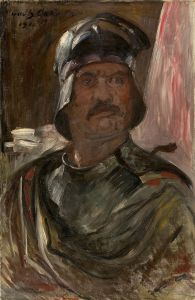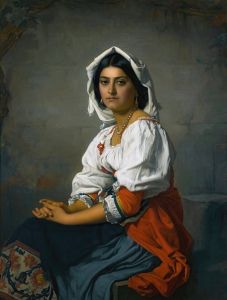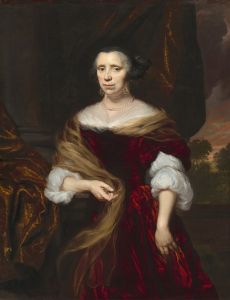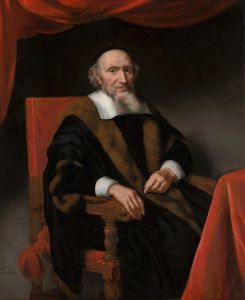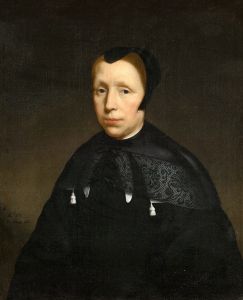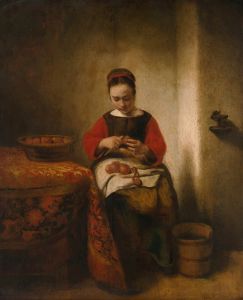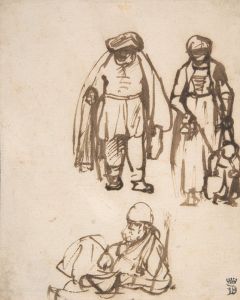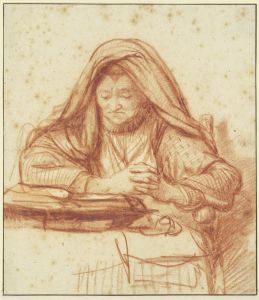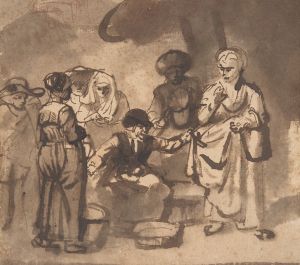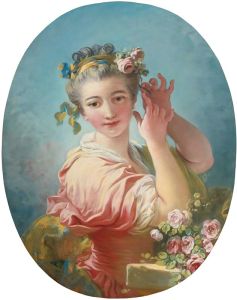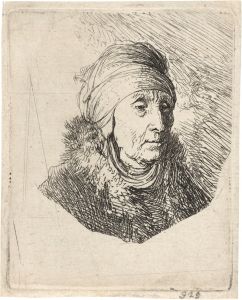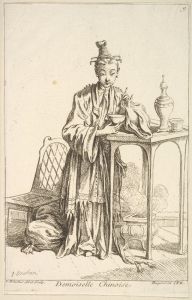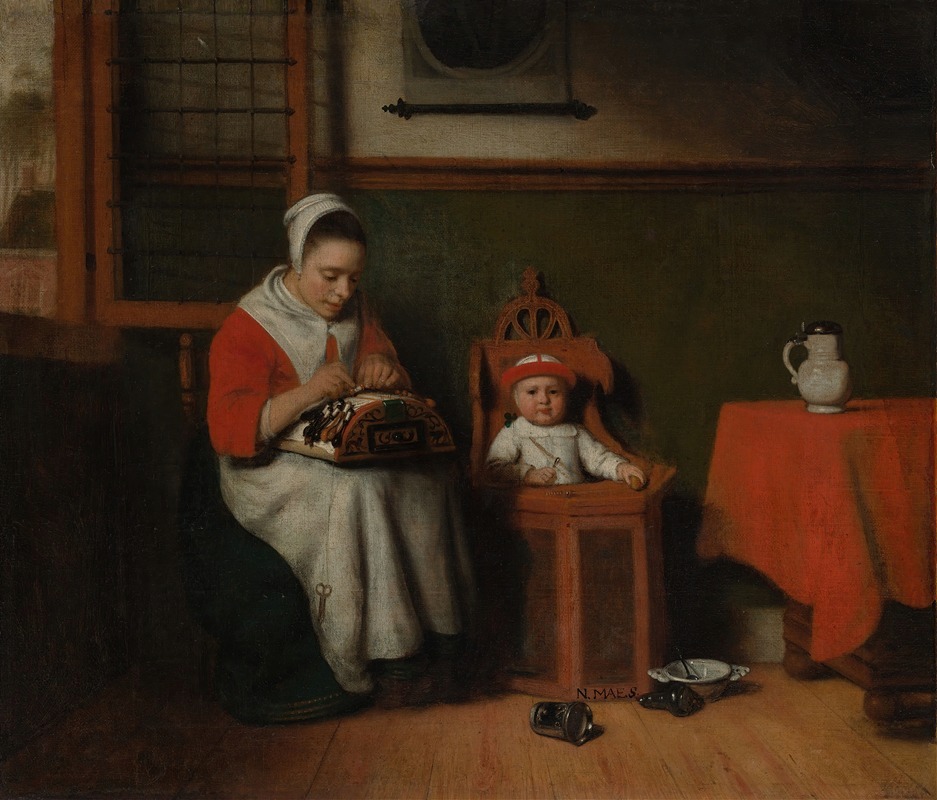
The Lacemaker
A hand-painted replica of Nicolaes Maes’s masterpiece The Lacemaker, meticulously crafted by professional artists to capture the true essence of the original. Each piece is created with museum-quality canvas and rare mineral pigments, carefully painted by experienced artists with delicate brushstrokes and rich, layered colors to perfectly recreate the texture of the original artwork. Unlike machine-printed reproductions, this hand-painted version brings the painting to life, infused with the artist’s emotions and skill in every stroke. Whether for personal collection or home decoration, it instantly elevates the artistic atmosphere of any space.
Nicolaes Maes, a prominent Dutch painter of the 17th century, is renowned for his genre scenes and portraits. One of his notable works is "The Lacemaker," which exemplifies his skill in capturing the intimate and domestic aspects of everyday life during the Dutch Golden Age. This painting is a fine representation of Maes's ability to depict the quiet dignity and concentration of women engaged in household tasks.
"The Lacemaker" portrays a young woman absorbed in the meticulous craft of lace-making, a common domestic activity in the Netherlands during this period. The painting is celebrated for its detailed depiction of the lace-making process, showcasing Maes's keen observation and technical prowess. The woman's focused expression and the delicate handling of the lace threads highlight the artist's attention to detail and his interest in the subtleties of human expression and activity.
Maes's use of light and shadow in "The Lacemaker" is particularly noteworthy. He employs chiaroscuro, a technique that contrasts light and dark to create a sense of depth and volume. This technique not only enhances the three-dimensionality of the figure but also draws attention to the woman's hands and the lace, emphasizing the precision required in her work. The warm, soft lighting creates an intimate atmosphere, inviting the viewer into the quiet world of the lacemaker.
The composition of the painting is carefully balanced, with the figure of the lacemaker positioned slightly off-center. This compositional choice directs the viewer's gaze towards the activity at hand, while the surrounding elements, such as the table and the lace-making tools, provide context and contribute to the narrative of domestic life. Maes's attention to the textures of different materials, from the softness of the woman's clothing to the intricate patterns of the lace, further enriches the visual experience.
Nicolaes Maes was a pupil of Rembrandt, and his influence is evident in Maes's work, particularly in his use of light and his interest in capturing the human condition. However, Maes developed his own distinctive style, characterized by a focus on domestic interiors and the lives of women. "The Lacemaker" is a testament to Maes's ability to convey the quiet beauty and dignity of everyday life, a theme that resonated with the values and interests of the Dutch middle class of the time.
The painting is part of a broader tradition of genre painting in the Netherlands, which sought to depict scenes of ordinary life with a sense of realism and empathy. This genre was popular among the burgeoning middle class, who appreciated art that reflected their own experiences and values. "The Lacemaker" fits within this tradition, offering a glimpse into the domestic sphere and the skilled labor of women, which was often overlooked in historical narratives.
Today, "The Lacemaker" by Nicolaes Maes is appreciated not only for its artistic merit but also for its cultural and historical significance. It provides insight into the social and economic context of the 17th-century Netherlands, highlighting the role of women in the domestic economy and the importance of crafts such as lace-making. Through this painting, Maes captures a moment of quiet concentration and skill, immortalizing the lacemaker's craft for future generations to admire.






